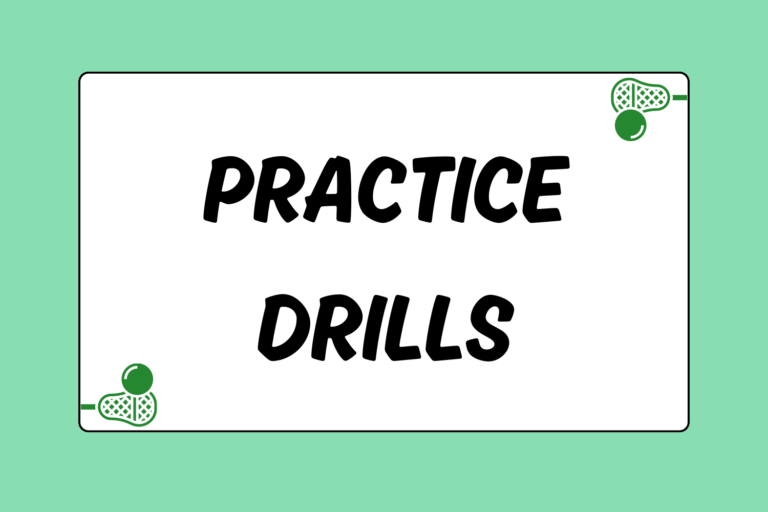Knowing how to string a head is one of the most important skills a laxer can have. It gives you the ability to string a stick to throw any way you please instead of having to use a factory stringing job, or rely on teammates or coaches to string your sticks. The best way to perfect your stringing is to first take an old head that’s no longer in use and unstring it, being careful to keep as many of the old strings intact as possible.
This guide will teach you how to string a head with a mesh pocket exactly to your liking, and provide a few tips on how to customize your stick to look and throw like a champ.
Pre-Game Warm-up
Before you dive headfirst into stringing up a spiffy new pocket, there are a few items on your to-do list that need to be checked off…
• Stretch out the mesh: Spend a little time breaking in the mesh, making sure to stretch out the part that will form the pocket and hold the ball. It can be very difficult to stretch mesh out once it’s all strung up in the head of the stick. A useful tip is to dunk it in hot water and then stretch out the sides.
• Obtain the proper stringing tools: At minimum, you will need a pocket tool (with pliers and a blade for cutting) and a lighter. It may also help to have a screwdriver and pocket pounder handy as well. The lighter should be used for burning the ends of strings that you’ve cut, so they don’t fray or hang too far down and get in your way.
• Don’t be afraid to make mistakes: It’s okay to mess up and go back to cover your tracks. Knots can always be untied, and strings can always be un-strung. The best stringers got that good by learning from mistakes and practicing a whole lot.
Top String
The top string is the first string that should be put into place. If you are taking string from a spool, be sure to allow yourself enough extra slack so that tying off the ends or running out of string does not become an issue. About 14 to 16 inches of string should be enough to do the trick.
The first step is to fold over the top row of diamonds on your mesh piece so that they overlap the next row. You’ll want the rough side of the mesh to be the pocket, with the smooth side on the back. With the folded-over side facing the back of the head, take one end of your top string and knot it almost at the end. Run the other end of the string through the top sidewall hole and put it through the front of the first diamond on the mesh piece.
Next, run the string through the back of the first top-hole on the head’s scoop area and through the front of the second diamond on the mesh; and then back through the string that went through the top-hole on the scoop. Pulling the string tightly across should form what looks like an “L” shape with the string. Bring the string over to the next top-hole and repeat the process.
Many newer sticks will have up to eight top-holes on the scoop of the head, while most older heads will only have four. It isn’t really necessary to use more than four, but if you’re feeling ambitious you can go through all the holes. Just make sure the diamonds on the mesh line up evenly with the holes you string through. The top point of the diamond should be directly underneath the corresponding top-hole.
Once you’ve gotten the top string through to the far sidewall, you’ll want to tie the side of the mesh to the sidewall with a secure knot. Tie the mesh as tightly as possible to the sidewall. This will allow it to properly stretch out once you begin playing with your new pocket.
Sidewalls
Sidewall stringing is the most important factor in having a well- shaped pocket. You have to make sure that all the strings are as tight as possible to lock the mesh into place and allow the pocket to stretch out and break in. Loose stringing on the sidewalls will result in a shallow pocket that won’t hold the ball well.
The first step to stringing the sidewalls is to make sure you have enough string for each side. Your sidewall strings will need to be longer than the top string since they have more holes to pass through and more knots to tie. Somewhere in the neighborhood of 20 to 22 inches of string should be enough to secure your sidewalls.
Once you’ve got your string ready, knot one end and run the other end through the same sidewall hole where the top string starts. Put the untied end through the front of the first diamond on the mesh, and then pull the string back towards the sidewall. Skip the next two sidewall holes down and put the string through the outside of the fourth sidewall hole. Then, come through the front of the second mesh diamond and over the string that went to the front of the fourth sidewall hole. Pull the string as tight as possible to ensure that the mesh will be locked in place.
Run the string from the outside to the inside of the next sidewall hole, through the front of the next mesh diamond, and back over the string running to the outside of the sidewall. Again, pull the string as tightly as possible and repeat this process all the way down the sidewall. When you get to the bottom of the sidewall, there should be two smaller holes right next to each other.
This is where you will tie off the sidewall string. Go through the outside of the first hole, through the front of the adjacent mesh diamond, and then through the inside of the last sidewall hole. Tie off the end of the sidewall string as close to the sidewall as possible to ensure tightness.
Shooting Strings
A well-strung stick only needs three shooting strings – two hockey laces and one nylon shooter. The highest string (the nylon shooter) should be the most tightly strung, and the lowest one should be the loosest. The progressive tightening from lowest to highest allows the ball to smoothly roll off the strings and give you the most accurate release.
Using a nylon string for the top shooting string makes the ball come out of the pocket with a little more fluidity and force than if you only use hockey strings. Some players prefer to use hockey laces for all of their shooting strings, and that’s fine, but if you’re a beginner it’s recommended that you use nylon for the top shooting string.
To begin stringing the nylon, use the top sidewall hole that doesn’t have any strings through it yet, and run your nylon shooter through until you have an even amount of string on each side of the hole. Viewing the head from the front, begin to weave the nylon through the second row of diamonds in the mesh. The string in front of the pocket should go over and through the next mesh hole, becoming the string behind the mesh.
The string originally behind the head should go through the back of the mesh hole and out through the front. Make sure to put it underneath the one going from front to back. Repeat this process all the way across, and be sure to follow the “front goes over, back goes under” pattern. Pull the nylon tight, but not as tight as the sidewalls. When you get to the end, tie the string through the open sidewall hole corresponding with the hole you strung it through in the beginning on the other side.
Skip a row of diamonds and begin to string your first hockey lace the same way you did the nylon string. Use the same “front goes over, back goes under” pattern, and then repeat this with your third shooting string after skipping another row of diamonds.
Hot Tip: Your Shooting Strings…
Depending how you want your stick to throw, there are a few different ways to do the shooting strings. While many players believe that more whip equates to harder shooting (and this may be somewhat true), your shooting form and mechanics are far more vital to your shooting velocity. However, accuracy is also very important to your shooting success, so keep that in mind when working on the shooting strings.
Finishing the Job
The final step to stringing your new wand is to tie the mesh to the bottom of the head. There should be four holes behind the ball-stop area for your bottom string. Get a string about four inches in length and tie a knot in one end. Put the un-knotted end through the right-most bottom string hole, and then through the front of the third diamond in the mesh.
Run the string over the back of the mesh and then out through the back of the third diamond from the left and out through the left-most bottom string hole, using a standard knot to tie it off. This string can be used to deepen the pocket, so be sure to give it some slack to that you’re able to adjust your pocket at a moment’s notice.
Now that your new pocket is ready to go, get out and play with it to make sure it throws the way you want. Adjust the throwing feel by playing with the shooting strings until the stick gets exactly how you like it. Remember, your pocket will be a little shallower when it’s brand new, so if it doesn’t look as deep as you’d like at first, work hard to break it in and shape it the way you want. Now get out there and start tearing it up with your freshly-strung wand!





